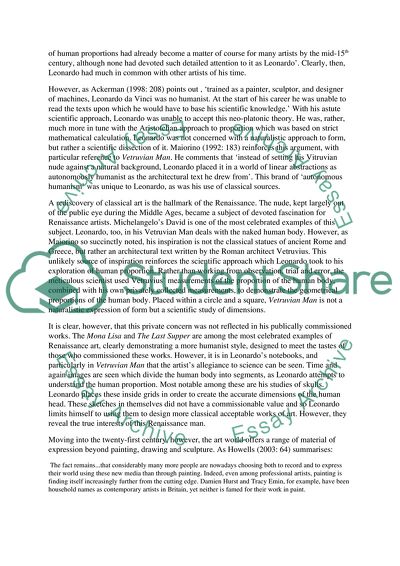Cite this document
(Leonardo da Vinci and Damien Hirst Essay Example | Topics and Well Written Essays - 3000 words, n.d.)
Leonardo da Vinci and Damien Hirst Essay Example | Topics and Well Written Essays - 3000 words. Retrieved from https://studentshare.org/performing-arts/1723208-art
Leonardo da Vinci and Damien Hirst Essay Example | Topics and Well Written Essays - 3000 words. Retrieved from https://studentshare.org/performing-arts/1723208-art
(Leonardo Da Vinci and Damien Hirst Essay Example | Topics and Well Written Essays - 3000 Words)
Leonardo Da Vinci and Damien Hirst Essay Example | Topics and Well Written Essays - 3000 Words. https://studentshare.org/performing-arts/1723208-art.
Leonardo Da Vinci and Damien Hirst Essay Example | Topics and Well Written Essays - 3000 Words. https://studentshare.org/performing-arts/1723208-art.
“Leonardo Da Vinci and Damien Hirst Essay Example | Topics and Well Written Essays - 3000 Words”, n.d. https://studentshare.org/performing-arts/1723208-art.


